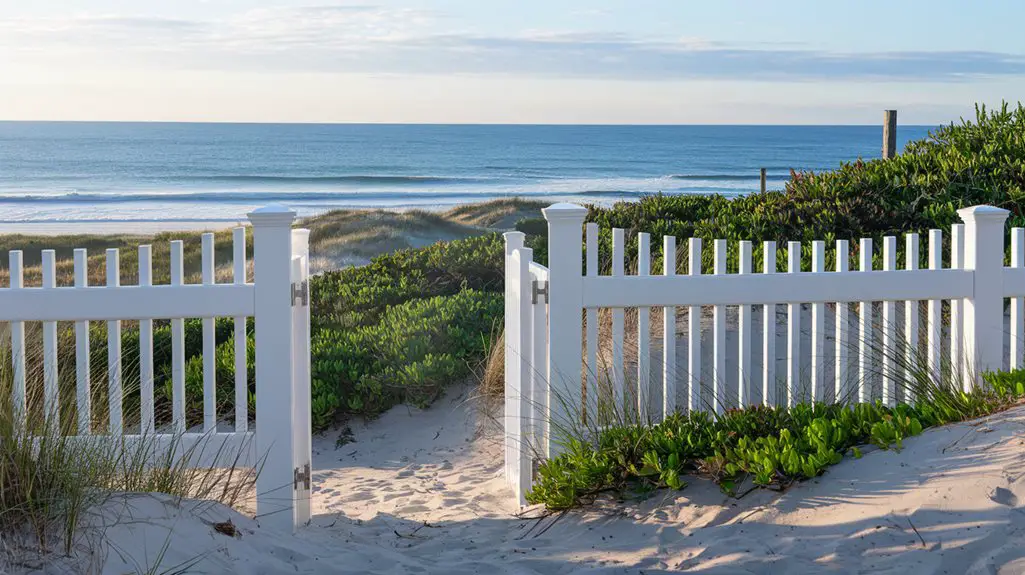Imagine your backyard water feature as a delicate ecosystem, much like a tiny world in a snow globe—beautiful but requiring care to maintain its charm. Just like that snow globe needs a gentle shake to clear the dust, your pond needs regular cleaning and maintenance to keep it thriving. But there's more to it than just tidying up; understanding water quality and seasonal adjustments can make all the difference. So, what's the secret to keeping your aquatic paradise flourishing?
Regular Cleaning and Maintenance
Caring for your backyard water features requires regular cleaning and maintenance to keep them looking pristine and functioning smoothly.
Start by removing debris like leaves and twigs, as they can clog filters and disrupt water flow. Use a soft brush for algae buildup, ensuring you don't scratch surfaces.
Check your pump and filter monthly; a clean system promotes better circulation. If you've got fish or plants, be gentle—avoid stressing them during cleanings.
Seasonal maintenance is essential, too; in fall, prepare for winter by draining and covering features to prevent damage. Additionally, consider seasonal maintenance practices that can enhance the longevity of your features throughout the year.
Regularly inspect for leaks or cracks, and fix them promptly. With consistent care, your water features will remain a stunning focal point in your backyard oasis.
Water Quality Management
Although water features can enhance the beauty of your backyard, maintaining their water quality is crucial for the health of aquatic life and the overall aesthetics of your space. Start by regularly testing the water for pH, ammonia, and nitrates. Clear debris and perform partial water changes to keep everything fresh. Consider introducing natural filtration systems, like a biofilter, to promote a balanced ecosystem. Additionally, incorporating best plants around water features can help improve water quality and provide habitat for wildlife.
| Water Quality Factor | Ideal Level | Impact on Ecosystem |
|---|---|---|
| pH | 6.5 – 8.5 | Supports diverse life |
| Ammonia | 0 ppm | Toxic at higher levels |
| Nitrates | < 20 ppm | Promotes algae growth |
| Dissolved Oxygen | > 5 mg/L | essential for fish survival |
| Temperature | 70°F – 75°F | Affects species behavior |
Plant and Wildlife Considerations

When planning your backyard water feature, consider how the plants and wildlife will interact with the space, as these elements can greatly enhance the overall ecosystem.
Choose native aquatic plants like water lilies or cattails; they not only provide shelter for fish but also help maintain water clarity. Incorporating a mix of submerged, emergent, and floating plants creates diverse habitats.
Keep in mind that birds, frogs, and beneficial insects will be drawn to your water feature, enriching your backyard's biodiversity. To attract pollinators, plant nearby flowers that bloom throughout the seasons.
Avoid using chemicals that could harm wildlife; instead, think about natural pest control methods. By fostering this balance, you'll create a vibrant, flourishing environment that benefits both plants and wildlife. Additionally, incorporating native plants into your garden design can further support local ecosystems.
Seasonal Preparations and Adjustments
As the seasons change, you'll want to prepare your backyard water feature to guarantee it thrives year-round.
In spring, clean debris and check your pump to verify it's functioning well after winter's rest. Add beneficial bacteria to jumpstart your ecosystem.
In summer, monitor water levels and algae growth; consider using a fountain to keep the water oxygenated. Incorporating water features can also help reduce surrounding noise pollution.
As fall arrives, trim back surrounding plants and net your pond to catch leaves before they sink.
Finally, winter requires special care: remove pumps and store them indoors, while adding a de-icer if you have fish.
Repairing Common Issues

While maintaining your backyard water feature can be a rewarding experience, you may encounter common issues that require prompt attention to keep it thriving. One frequent problem is algae growth; to combat this, regularly clean and use beneficial bacteria to maintain a balanced ecosystem.
If your pump's making strange noises or isn't circulating water effectively, check for clogs or debris. Sometimes, a simple cleaning does the trick.
Cracks in your pond liner can lead to leaks—use a waterproof sealant for quick repairs. Don't forget to monitor water levels; evaporation can be sneaky.
Finally, if fish seem stressed, test the water's pH and temperature. Address these issues swiftly, and your water feature will remain a stunning centerpiece for years to come. Consider incorporating eco-friendly water features that enhance both your garden's beauty and environmental health.
Conclusion
By staying on top of regular cleaning and water quality checks, you're not just maintaining a beautiful feature but also nurturing a vibrant ecosystem. Imagine watching frogs leap and dragonflies dance above crystal-clear waters—doesn't that sound enchanting? Remember to incorporate native plants and prepare your pond for seasonal changes to keep everything thriving. With a little effort, your backyard water feature can become a serene sanctuary that attracts wildlife and provides endless joy.



